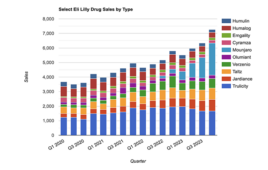Dicerna Pharmaceuticals announced that the European Medicines Agency’s (EMA) Committee for Orphan Medicinal Products (COMP) has recommended designating DCR-PHXC, the Company’s lead GalXC product candidate, as an orphan medicinal product for the treatment of primary hyperoxaluria (PH) in the European Union (EU). The European Commission (EC) is expected to review the COMP opinion and issue a final ruling within 30 days of receipt.
Separately, Dicerna recently announced that the U.S. FDA granted Orphan Drug Designation to DCR-PHXC for the treatment of PH.
Dicerna is investigating DCR-PHXC for the treatment of all forms of PH, a family of severe, rare, inherited disorders of the liver that often result in kidney failure. The Company initiated the PHYOX Phase 1 clinical trial of DCR-PHXC in normal healthy volunteers in the fourth quarter of 2017 and dosed the first patient with PH in May 2018, with clinical proof-of-concept data anticipated in the second half of 2018.
“We are gratified to see regulators recognize the urgent need for a safe and effective therapy for primary hyperoxaluria, as well as the encouraging preclinical data for DCR-PHXC in various mouse models of PH,” said Ralf Rosskamp, M.D., chief medical officer of Dicerna. “This positive recommendation, as well as the Orphan Drug Designation from the FDA, acknowledges the needs of this underserved patient population.”
The EMA grants orphan medicinal product designation to investigational drugs intended to treat, prevent or diagnose a life-threatening or chronically debilitating disease affecting fewer than five in 10,000 people in the EU, and for which no satisfactory treatment is available. Orphan medicinal product designation provides regulatory and financial incentives for companies to develop and market therapies, including market exclusivity, protocol assistance, fee reductions, and EU-funded research.
In examining the orphan medicinal product application for DCR-PHXC, the COMP concluded that Dicerna established the following:
- The intention to treat PH with DCR-PHXC is justified based on reduction of urine oxalate concentration and kidney oxalate crystal deposits in a non-clinical model of the condition;
- The condition is chronically debilitating and life-threatening, in particular because of nephrolithiasis (presence of kidney stones) and nephrocalcinosis (calcification in the renal parenchyma, the functional part of the kidney) leading to renal damage. The majority of patients with PH reach end-stage renal disease (ESRD) during the third to fifth decade of life;
- The condition was estimated to affect fewer than five per 10,000 persons in the EU at the time the application was submitted.
About DCR-PHXC
DCR-PHXC is an investigational drug in development for the treatment of all forms of primary hyperoxaluria (PH), and the most advanced product candidate utilizing Dicerna’s GalXC technology. GalXC is a proprietary platform invented by Dicerna scientists to discover and develop next-generation RNAi-based therapies designed to silence disease-driving genes in the liver. In animal models of PH, DCR-PHXC selectively silences LDHA in the liver, blocking the excess production of oxalate, a hallmark of the disease. In preclinical studies of DCR-PHXC, the compound was well tolerated with no adverse effects in the liver.
Studies have shown that people who are completely deficient in LDHA show no liver dysfunction and can lead normal lives. LDHA deficiency in the liver might be beneficial for patients with PH, as the LDHA enzyme is implicated in the abnormal production of oxalate in PH, which in turn is responsible for the severe damage to kidneys and other organ systems in patients with PH.
(Source: Dicerna Pharmaceuticals, Inc.)
Filed Under: Drug Discovery




